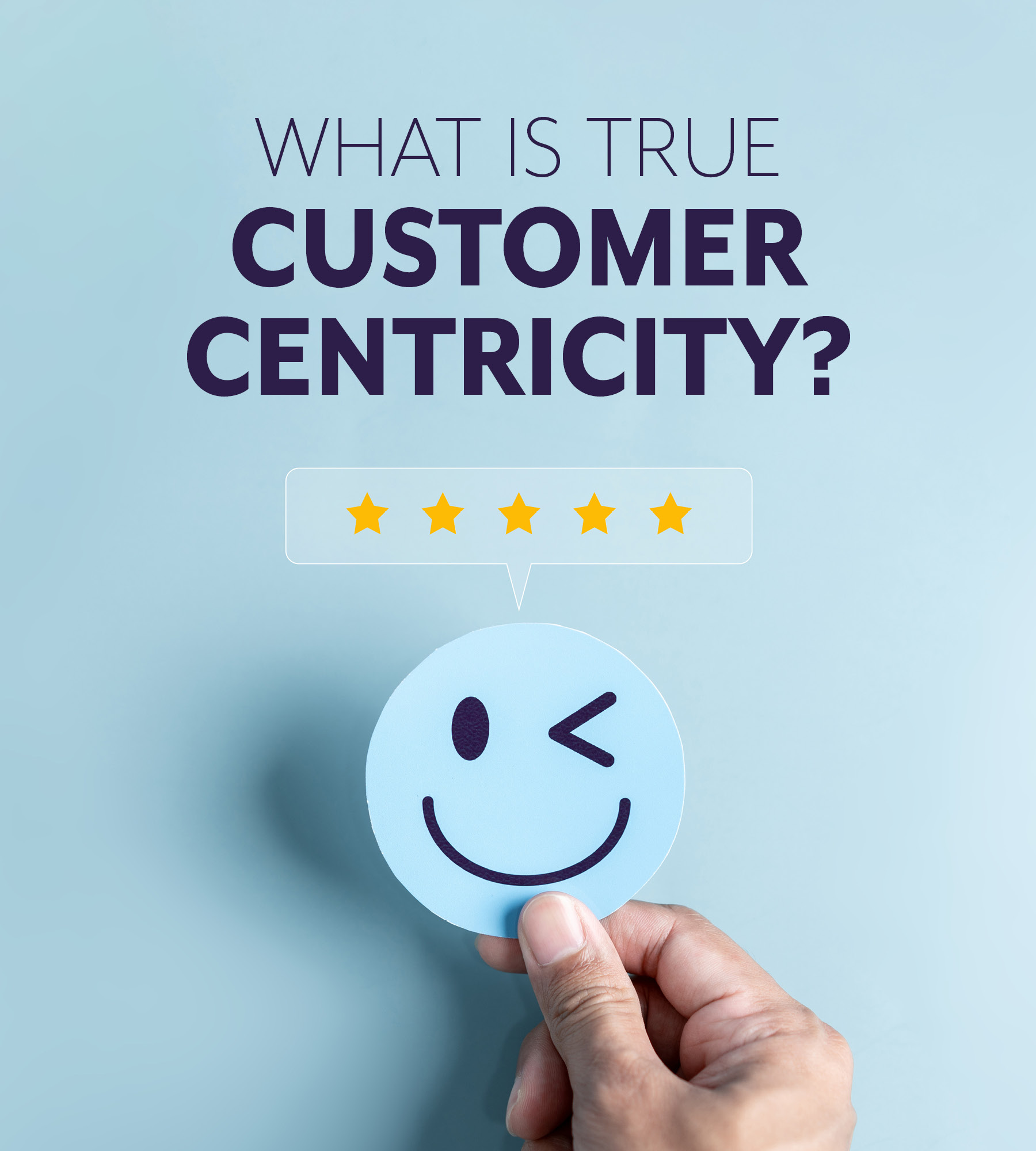Language
You can read the magazine in one of the following languages
Three troubling realities exist in business. First, certain companies, often in monopolistic environments, fail customers yet remain profitable. Second, some firms claim to prioritize customer needs, but this is typically only a triumph of marketing. Lastly, there are those that achieve accidental success; however, this is often short-lived and they will struggle to replicate it over and over again.
Yet for the vast majority of businesses operating outside of these or any other niche exceptions, there is only one thing standing between long-term success and stagnation: true and lasting customer centricity.
The fact is, customer-centric companies are 60 percent more profitable than their purely financially driven counterparts. But it’s also extremely difficult to pull off, which is why so many businesses fail at it or settle for lackluster performances.

Customer-centric companies are 60 percent more profitable than their purely financially driven counterparts.
The past decade has vividly illustrated this point. Companies like Netflix, Slack, Spotify and Tesla, which were quick to adapt to changing customer demands and technologies, now lead their respective industries. In stark contrast, once-dominant brands such as Blockbuster, Toys R Us, JCPenney and Kodak have hugely declined or gone bust, primarily due to their failure to evolve in line with customer needs.
However, a common mistake businesses make is believing that the essence of customer centricity is simply about doing some market research and responding to feedback. It requires a far more systemic approach, one that gains a deep understanding of customer needs and aligns every business decision to meet these needs.
This often necessitates a fundamental rethinking of a company’s structure and decision-making processes, root and branch.
I’ve seen a wide spectrum of approaches to customer centricity, ranging from half-hearted attempts to outstanding examples of innovation. What I’ve learned is that true customer centricity requires a committed, holistic approach.
From brand to product design to marketing, all departments must be coordinated to proactively leverage emerging trends and preferences. A customer-centric organization captures, understands, predicts and acts on customer needs at scale and speed, creating value for both the customer and the company.
Many businesses invest heavily in understanding their customers, yet often their efforts are confined to specific departments like insights or marketing, rather than underlying a company-wide way of being. A lack of a holistic approach is what often leads to failure – and over time that can manifest as diminished customer loyalty, a negative reputation and missed revenue opportunities.

A lack of a holistic approach is what often leads to failure – and over time that can manifest as diminished customer loyalty, a negative reputation and missed revenue opportunities.
These revenue opportunities are stark, as demonstrated by a recent analysis of FTSE 350 companies by STRAT7. This study, which employed the in-house-developed strat7.ai to examine numerous annual reports, found a correlation between customer centricity and financial performance.
Companies that were more customer centric, as indicated by the language they used in their reports, saw their share price grow by 10 percent more than their less customer-focused peers over a three-year period.
This data underscores the importance of not just understanding customer needs, but being able and willing to act on that understanding. Certainly in the face of unprecedented disruptions in recent years, adaptability and a swift response to change have emerged as hallmarks of customer-centric organizations.
Recognizing and responding to change – which, as the COVID-19 pandemic and the rise of AI shows, can happen extremely quickly and with enormous impact – requires businesses to have a ‘radar’ that constantly detects market and customer shifts.
Despite tools being available to aid in this, many businesses aren’t making the most of their capabilities. Technologies such as machine learning and predictive analytics stand out. They provide the capability to discern patterns and trends that could give a business a competitive edge and make them more adaptive to changing customer preferences.

Ultimately, with the right use of technology, businesses can ensure they remain aligned with, if not ahead of, ever-changing market dynamics.
For example, consider the potential of analyzing large amounts of unstructured data, like customer emails, call center logs or social media data, to extract critical insights into emerging market trends.
By incorporating predictive analytics as one of their tools, while also incorporating long-term cultural change and short-to-mid-term behavior change, companies not only gain foresight but also the ability to craft proactive, time-based strategies.
This approach enables them to navigate potential challenges and seize any opportunities that arise.
Ultimately, with the right use of technology, businesses can ensure they remain aligned with, if not ahead of, ever-changing market dynamics.
New data shows that 98 percent of CEOs are considering an overhaul of their business model. However, there’s a shared concern that many organizations aren’t adapting quickly enough, or that they lack the agility to deal with change.
Part of the solution is to rethink leadership roles and the culture they help manage. While introducing new roles like a chief change officer certainly has its uses here, systemic change demands a more united front from existing roles, in particular CEOs, CFOs and CMOs.
This leadership triumvirate is crucial for several reasons. First, CEOs embody a company’s long-term trajectory and strategies – and should therefore also personify and guide a customer-centric vision.
Meanwhile, the role of the CMO has evolved in recent years from being a cost center into an engine for growth. CMOs need to invest significant sums in large-scale systems infrastructure, requiring close collaboration with the CFO. Uniting these three roles is therefore the most effective way to drive customer centricity, ensuring it filters from the C-Suite into the most important functions of the wider business.

This leadership triumvirate is crucial for several reasons. First, CEOs embody a company’s long-term trajectory and strategies – and should therefore also personify and guide a customer-centric vision.
Indeed, the unification of CEOs, CFOs and CMOs in steering customer-centric change echoes the complexity of this transformation and its far-reaching implications. It’s a perspective that underscores not just the significance of these leadership roles, but also the interconnectedness of their efforts in driving a fundamental shift in organizational culture.
A disunited C-suite and a business operating in strict silos will only work against these aims. However, a CEO with a long-term customer-first vision backed by evidence from a robust and holistic sensory system can help foster better departmental collaboration. This provides not just a consolidated view of the customer and market, but also the ability to make the necessary decisions to act on this understanding.
Simply, this is what the world’s leading customer-centric businesses do – and it is allowing them to steer through market uncertainties, spot previously unseen opportunities and ensure consistent growth.
As our world changes, businesses are being presented with exceptional new challenges and prospects. So question your own organization, and ask: do we really have the customer at the heart of everything we do? And if not, why not? And what should we do about it?

Bjorn Dufwenberg
Contributor Collective Member
Bjorn Dufwenberg is Managing Director of STRAT7 Advisory, the consulting practice within the global strategic insights and customer analytics group STRAT7. He is responsible for the development and go-to market strategy for STRAT7 Advisory. He manages the Advisory team and works closely with the specialist agencies across the STRAT7 group to solve clients’ specific challenges by helping them become more customer centric. Bjorn has worked in management consulting, innovation strategy and corporate strategy for 18 years. Prior to joining STRAT7 in 2021, he headed the customer-led transformation practice at PwC Sweden and was a partner at Pond, an innovation strategy agency that sold to PwC. For more information, go to https://strat7.com/advisory/
